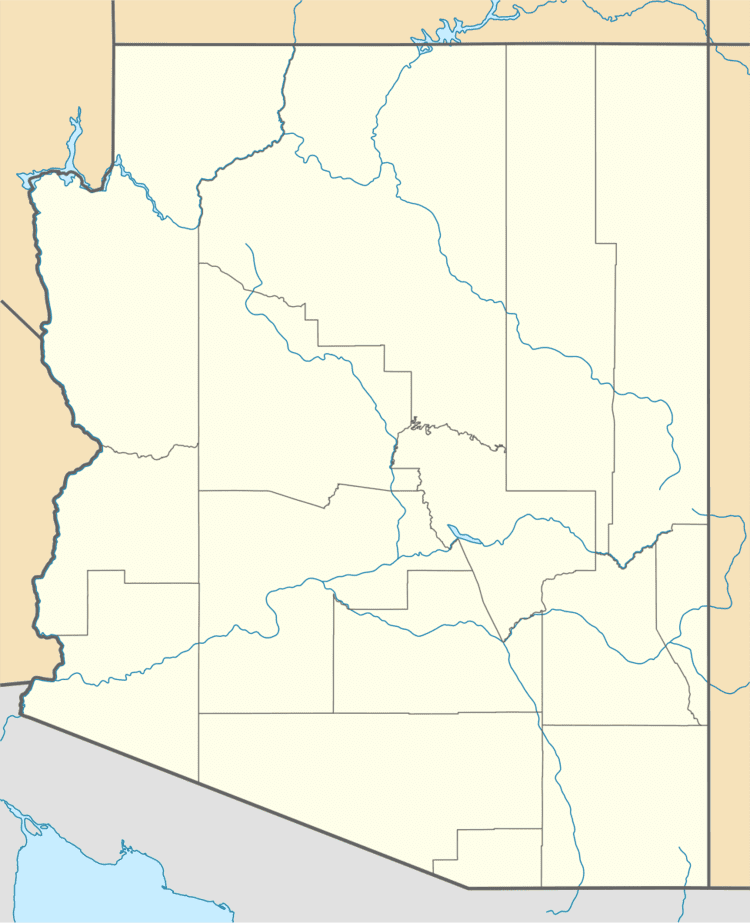Weather 72% clear nights Address Tucson, AZ 85634, USA Code 695 | Website www.noao.edu/kpno Phone +1 520-318-8000 | |
 | ||
Altitude 2,096 metres (6,877 ft) KPNO Nicholas U. Mayall Telescope 4.0 m Ritchey-Chrétien reflector WIYN Telescope 3.5 m Ritchey-Chrétien reflector Hours Closed now Wednesday9AM–4PMThursday9AM–4PMFriday9AM–4PMSaturday9AM–4PMSunday9AM–4PMMonday9AM–4PMTuesday9AM–4PM Similar Pima Air & Space Museum, Lowell Observatory, Arizona‑Sonora Desert Museum, Tohono Chul Park, Old Tucson Studios | ||
Kitt peak national observatory
The Kitt Peak National Observatory (KPNO) is a United States astronomical observatory site located on 2,096 m (6,880 ft) Kitt Peak of the Quinlan Mountains in the Arizona-Sonoran Desert on the Tohono O'odham Nation, 88 kilometers (55 mi) west-southwest of Tucson, Arizona. With 24 optical and two radio telescopes, it is the largest, most diverse gathering of astronomical instruments in the world. The observatory is administered by the National Optical Astronomy Observatory (NOAO).
Contents
- Kitt peak national observatory
- A quick tour of kitt peak national observatory
- General informationEdit
- ClimateEdit
- References
A quick tour of kitt peak national observatory
General informationEdit
Kitt Peak was selected by its first director, Aden B. Meinel, in 1958 as the site for a national observatory under contract with the National Science Foundation (NSF) and was administered by the Association of Universities for Research in Astronomy. The land was leased from the Tohono O'odham under a perpetual agreement. The second director (1960 to 1971) was Nicholas U. Mayall. In 1982 NOAO was formed to consolidate the management of three optical observatories — Kitt Peak; the National Solar Observatory facilities at Kitt Peak and Sacramento Peak, New Mexico; and the Cerro Tololo Inter-American Observatory in Chile. The observatory sites are under lease from the Tohono O'odham Nation at the amount of a quarter dollar per acre yearly, which was overwhelmingly approved by the Council in the 1950s. In 2005, the Tohono O'odham Nation brought suit against the National Science Foundation to stop further construction of gamma ray detectors in the Gardens of the Sacred Tohono O'odham Spirit I'itoi, which are just below the summit.
The principal instruments at KPNO are the Mayall 4 metre telescope; the WIYN 3.5 metre telescope; and further 2.1 m, 1.3 m, 0.9 m, and 0.4 m reflecting telescopes. The McMath-Pierce Solar Telescope on the facilities is the largest solar telescope in the world and the largest unobstructed reflector (it doesn't have a secondary mirror in the path of incoming light). The ARO 12m Radio Telescope is also in the location.
Kitt Peak is famous for hosting the first telescope (an old 91 cm reflector) used to search for near-Earth asteroids, and calculating the probability of an impact with planet Earth.
Kitt Peak hosts an array of programs for the public to take part in:
Kitt Peak's Southeastern Association for Research and Astronomy (SARA) Telescope was featured in the WIPB-PBS documentary, "Seeing Stars in Indiana". The project followed SARA astronomers from Ball State University to the observatory and featured time-lapse images from various points around Kitt Peak.
ClimateEdit
Due to its high elevation, the observatory experiences a much cooler and wetter climate throughout the year than most of the Sonoran desert.
